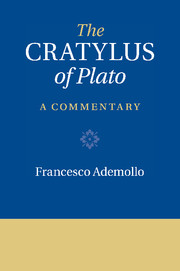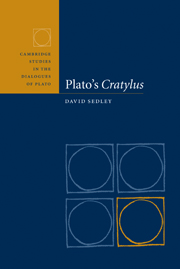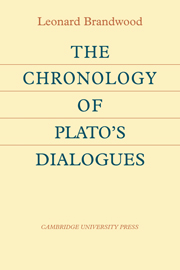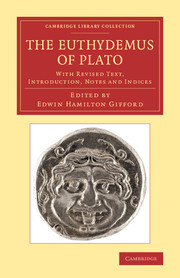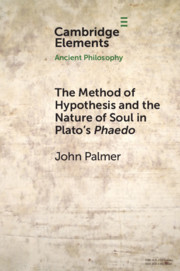The Cratylus of Plato
The Cratylus, one of Plato's most difficult and intriguing dialogues, explores the relations between a name and the thing it names. The questions that arise lead the characters to face a number of major issues: truth and falsehood, relativism, etymology, the possibility of a perfect language, the relation between the investigation of names and that of reality, the Heraclitean flux theory and the Theory of Forms. This full-scale commentary on the Cratylus offers a definitive interpretation of the dialogue. It contains translations of the passages discussed and a line-by-line analysis which deals with textual matters and unravels Plato's dense and subtle arguments, reaching a novel interpretation of some of the dialogue's main themes as well as of many individual passages. The book is intended primarily for graduate students and scholars, in both philosophy and classics, but presupposes no previous acquaintance with the subject and is accessible to undergraduates.
- The first full-scale commentary on this challenging dialogue
- Contains translations of all passages discussed, with the relevant Greek expressions quoted in brackets, enabling a non-classicist reader to easily follow the argument
- Offers a comprehensive treatment of both philosophical and textual matters
Reviews & endorsements
'[This book] strikes me as a model of its kind. Dr Ademollo writes with the highest degree of lucidity and fluency, setting out the various positions and arguments with complete clarity and making judicious use of the resources of contemporary philosophy … the book is one of the most attractively written which I have come across for some time.' Christopher Taylor, Phronesis
Product details
April 2018Paperback
9781108458276
558 pages
230 × 153 × 33 mm
0.84kg
1 b/w illus.
Available
Table of Contents
- Introduction
- 1. Cratylus' naturalism (383a–384c)
- 2. Hermogenes' conventionalism (383a–384c)
- 3. Naturalism defended (386e–390e)
- 4. Naturalism unfolded (390e–394e)
- 5. Naturalism illustrated: the etymologies of 'secondary' names (394e–421c)
- 6. Naturalism illustrated: the primary names (421c–427c)
- 7. Naturalism discussed (427e–433c)
- 8. Naturalism refuted and conventionalism defended (433b–439b)
- 9. Flux and forms (439b–440e)
- Appendix 1. The text of 437d10–438b8
- Appendix 2. Some interpolations and non-mechanical errors.

